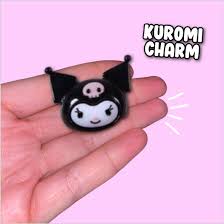Calm Store is a registered NDIS provider, and a family run business, committed to helping our customers feel better and get the most out of life.
The world's largest therapy service. 100% online. Get matched with a professional, licensed, and vetted therapist in less than 48 hours.
With its focus on full, cleansing breaths, deep breathing is a simple yet powerful relaxation technique. It’s easy to learn, can be practiced almost anywhere, and provides a quick way to get your stress levels in check. Deep breathing is the cornerstone of many other relaxation practices, too, and can be combined with other relaxing elements such as aromatherapy and music. While apps and audio downloads can guide you through the process, all you really need is a few minutes and a place to sit quietly or stretch out.
Breathe in through your nose. The hand on your stomach should rise. The hand on your chest should move very little.
Exhale through your mouth, pushing out as much air as you can while contracting your abdominal muscles. The hand on your stomach should move in as you exhale, but your other hand should move very little.
Continue to breathe in through your nose and out through your mouth. Try to inhale enough so that your lower abdomen rises and falls. Count slowly as you exhale.
If you find it difficult breathing from your abdomen while sitting up, try lying down. Put a small book on your stomach, and breathe so that the book rises as you inhale and falls as you exhale.
Progressive muscle relaxation is a two-step process in which you systematically tense and relax different muscle groups in the body. With regular practice, it gives you an intimate familiarity with what tension—as well as complete relaxation—feels like in different parts of your body. This can help you react to the first signs of the muscular tension that accompanies stress. And as your body relaxes, so will your mind.
Consult with your doctor first if you have a history of muscle spasms, back problems, or other serious injuries that may be aggravated by tensing muscles.
This is a type of meditation that that focuses your attention on various parts of your body. Like progressive muscle relaxation, you start with your feet and work your way up. But instead of tensing and relaxing muscles, you simply focus on the way each part of your body feels, without labeling the sensations as either “good” or “bad”.
Lie on your back, legs uncrossed, arms relaxed at your sides, eyes open or closed. Focus on your breathing for about two minutes until you start to feel relaxed.
Turn your focus to the toes of your right foot. Notice any sensations you feel while continuing to also focus on your breathing. Imagine each deep breath flowing to your toes. Remain focused on this area for three to five seconds (or more).
Move your focus to the sole of your right foot. Tune in to any sensations you feel in that part of your body and imagine each breath flowing from the sole of your foot. After one or two minutes, move your focus to your right ankle and repeat. Move to your calf, knee, thigh, hip, and then repeat the sequence for your left leg. From there, move up the torso, through the lower back and abdomen, the upper back and chest, and the shoulders. Pay close attention to any area of the body that causes you pain or discomfort.
After completing the body scan, relax for a while in silence and stillness, noting how your body feels. Then slowly open your eyes and stretch, if necessary.
Visualization, or guided imagery, is a variation on traditional meditation that involves imagining a scene in which you feel at peace, free to let go of all tension and anxiety. Choose whatever setting is most calming to you, whether it's a tropical beach, a favorite childhood spot, or a quiet wooded glen.
You can practice visualization on your own or with an app or audio download to guide you through the imagery. You can also choose to do your visualization in silence or use listening aids, such as soothing music or a sound machine or a recording that matches your chosen setting: the sound of ocean waves if you’ve chosen a beach, for example.
Close your eyes and imagine your restful place. Picture it as vividly as you can: everything you see, hear, smell, taste, and feel. Just “looking” at it in your mind's eye like you would a photograph is not enough. Visualization works best if you incorporate as many sensory details as possible. For example, if you are thinking about a dock on a quiet lake:
Enjoy the feeling of your worries drifting away as you slowly explore your restful place. When you are ready, gently open your eyes and come back to the present. Don't worry if you sometimes zone out or lose track of where you are during a visualization session. This is normal. You may also experience feelings of heaviness in your limbs, muscle twitches, or yawning. Again, these are normal responses.
You’re probably already aware how much a professional massage at a spa or health club can help reduce stress, relieve pain, and ease muscle tension. What you may not be aware of is that you can experience some of the same benefits at home or work by practicing self-massage, or trading massages with a loved one.
Try taking a few minutes to massage yourself at your desk between tasks, on the couch at the end of a hectic day, or in bed to help you unwind before sleep. To enhance relaxation, you can use aromatic oil, scented lotion, or combine self-message with mindfulness or deep breathing techniques.
Stress relief productsA combination of strokes works well to relieve muscle tension. Try gentle chops with the edge of your hands or tapping with fingers or cupped palms. Put fingertip pressure on muscle knots. Knead across muscles, and try long, light, gliding strokes. You can apply these strokes to any part of the body that falls easily within your reach. For a short session like this, try focusing on your neck and head:
Start by kneading the muscles at the back of your neck and shoulders. Make a loose fist and drum swiftly up and down the sides and back of your neck. Next, use your thumbs to work tiny circles around the base of your skull. Slowly massage the rest of your scalp with your fingertips. Then tap your fingers against your scalp, moving from the front to the back and then over the sides.
Now massage your face. Make a series of tiny circles with your thumbs or fingertips. Pay particular attention to your temples, forehead, and jaw muscles. Use your middle fingers to massage the bridge of your nose and work outward over your eyebrows to your temples.
Mindfulness has become extremely popular in recent years, garnering headlines and endorsements from celebrities, business leaders, and psychologists alike. So, what is mindfulness? Rather than worrying about the future or dwelling on the past, mindfulness switches your focus to what’s happening right now, enabling you to be fully engaged in the present moment.
Meditations that cultivate mindfulness have long been used to reduce stress, anxiety, depression, and other negative emotions. Some of these practices bring you into the present by focusing your attention on a single repetitive action, such as your breathing or a few repeated words. Other forms of mindfulness meditation encourage you to follow and then release internal thoughts or sensations. Mindfulness can also be applied to activities such as walking, exercising, or eating.
Using mindfulness to stay focused on the present might seem straightforward, but it takes practice to reap all the benefits. When you first start practicing, you’ll likely find that your focus keeps wandering back to your worries or regrets. But don't get disheartened. Each time you draw your focus back to the present, you’re strengthening a new mental habit that can help you break free of fretting about the past or stressing about the future. Using an app or audio download can also help focus your attention, especially when you're starting out.
Close your eyes and find a point of focus, such as your breathing—the sensation of air flowing into your nostrils and out of your mouth or your belly rising and falling—or a meaningful word that you repeat throughout the meditation.
Close your eyes and find a point of focus, such as your breathing—the sensation of air flowing into your nostrils and out of your mouth or your belly rising and falling—or a meaningful word that you repeat throughout the meditation.
Don’t worry about distracting thoughts that go through your mind or about how well you’re doing. If thoughts intrude your relaxation session, don’t fight them, just gently turn your attention back to your point of focus, without judgment.
The idea of exercising may not sound particularly soothing, but rhythmic exercise that gets you into a flow of repetitive movement can produce the relaxation response. Examples include:
As with meditation, mindful exercise requires being fully engaged in the present moment, paying attention to how your body feels right now, rather than your daily worries or concerns. Instead of zoning out or staring at a TV as you exercise, focus on the sensations in your limbs and how your breathing complements your movement.
If you’re walking or running, for example, focus on the sensation of your feet touching the ground, the rhythm of your breath, and the feeling of the wind against your face. If you’re resistance training, focus on coordinating your breathing with your movements and pay attention to how your body feels as you raise and lower the weights. And when your mind wanders to other thoughts, gently return your focus to your breathing and movement.
Yoga involves a series of both moving and stationary poses, combined with deep breathing. As well as reducing anxiety and stress, yoga can also improve flexibility, strength, balance, and stamina. Since injuries can happen when yoga is practiced incorrectly, it's best to learn by attending group classes, hiring a private teacher, or at least following video instructions. Once you've learned the basics, you can practice alone or with others, tailoring your practice as you see fit.
Although almost all yoga classes end in a relaxation pose, classes that emphasize slow, steady movement, deep breathing, and gentle stretching are best for stress relief.
Satyananda is a traditional form of yoga. It features gentle poses, deep relaxation, and meditation, making it suitable for beginners as well as anyone aiming primarily for stress reduction.
Hatha yoga is also a reasonably gentle way to relieve stress and is suitable for beginners. Alternately, look for labels like gentle, for stress relief, or for beginners when selecting a yoga class.
Power yoga, with its intense poses and focus on fitness, is better suited to those looking for stimulation as well as relaxation.



